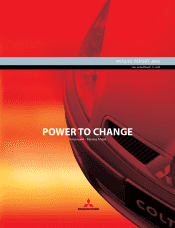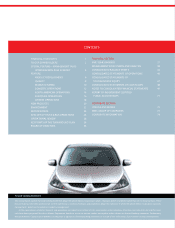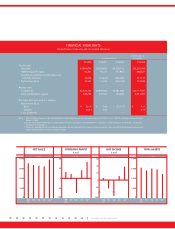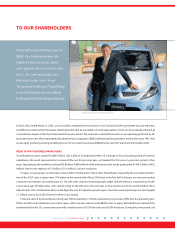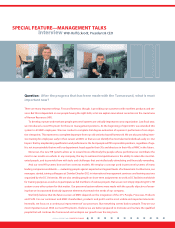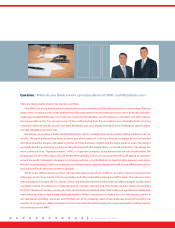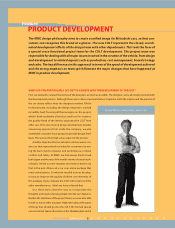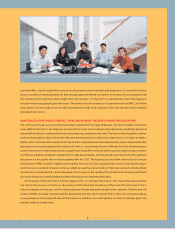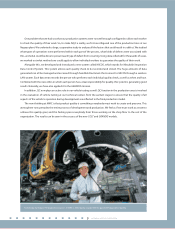Mitsubishi 2003 Annual Report Download - page 9
Download and view the complete annual report
Please find page 9 of the 2003 Mitsubishi annual report below. You can navigate through the pages in the report by either clicking on the pages listed below, or by using the keyword search tool below to find specific information within the annual report.
7MITSUBISHI MOTORS CORPORATION
7MITSUBISHI MOTORS CORPORATION
The COLT development team was a special cross-functional project team of younger employees.
our head office, and we sought their opinions on the product extensively during development. As a result, the interior
boasts a number of interesting features that strongly appeal to female consumers. In the past, the only people inside
the company whose opinions were sought were top managers. So the COLT is a real departure from that approach
because many young people gave their input. The power of youth is taking us in a good direction at MMC, and I think
the progress we have made in new product development needs to be a pointer to the way that the whole company
develops from now on.
WHAT EXACTLY WAS THE COLT PROJECT TEAM, AND HOW DID THE DEVELOPMENT PROCESS DIFFER?
The COLT project team was a cross-functional team composed of younger employees. The team members came from
many different functions: development personnel from areas such as design and engineering, marketing personnel
responsible for brands, and people from product planning, production and sales. The team worked together continu-
ously on the project for about 30 months. We were determined not to make any compromises in our quest to make a
better car for customers. We worked hard to break down any barriers between departments, and we remained flexible
but tenacious as we participated in the creation of a new car. Some things that were different from the old development
process were that we had brands and sales people from head office involved all the way from initial concept creation,
and that we asked the production department to make the prototype. All these people were involved in the extensive
discussions on the quality that we were targeting with the COLT. These processes arose from a desire for us to ensure
that all parts of MMC would be equally convinced that, first, the COLT was a good product, and second, that the impor-
tant thing was to get back to basics so that we ended up creating a great small car. There were occasions during devel-
opment when somebody had a great idea about how to improve the quality of the product and, having agreed that it
was worth doing, we actually backtracked the whole process to implement that idea.
A final aspect of the COLT that is a first for Japan is CFC, or Customer Free Choice. This means that each customer
can choose the precise car that he or she wants, so that it feels like something of their own from the outset. This is
truly an example of creating a car from the perspective of maximizing the benefit to the customer. I believe that the
culture of MMC has really changed, and the development of the COLT is proof of this. In this new corporate culture,
young people are encouraged to express their opinions, and they can work together in a team to develop great new
products without compromise.

